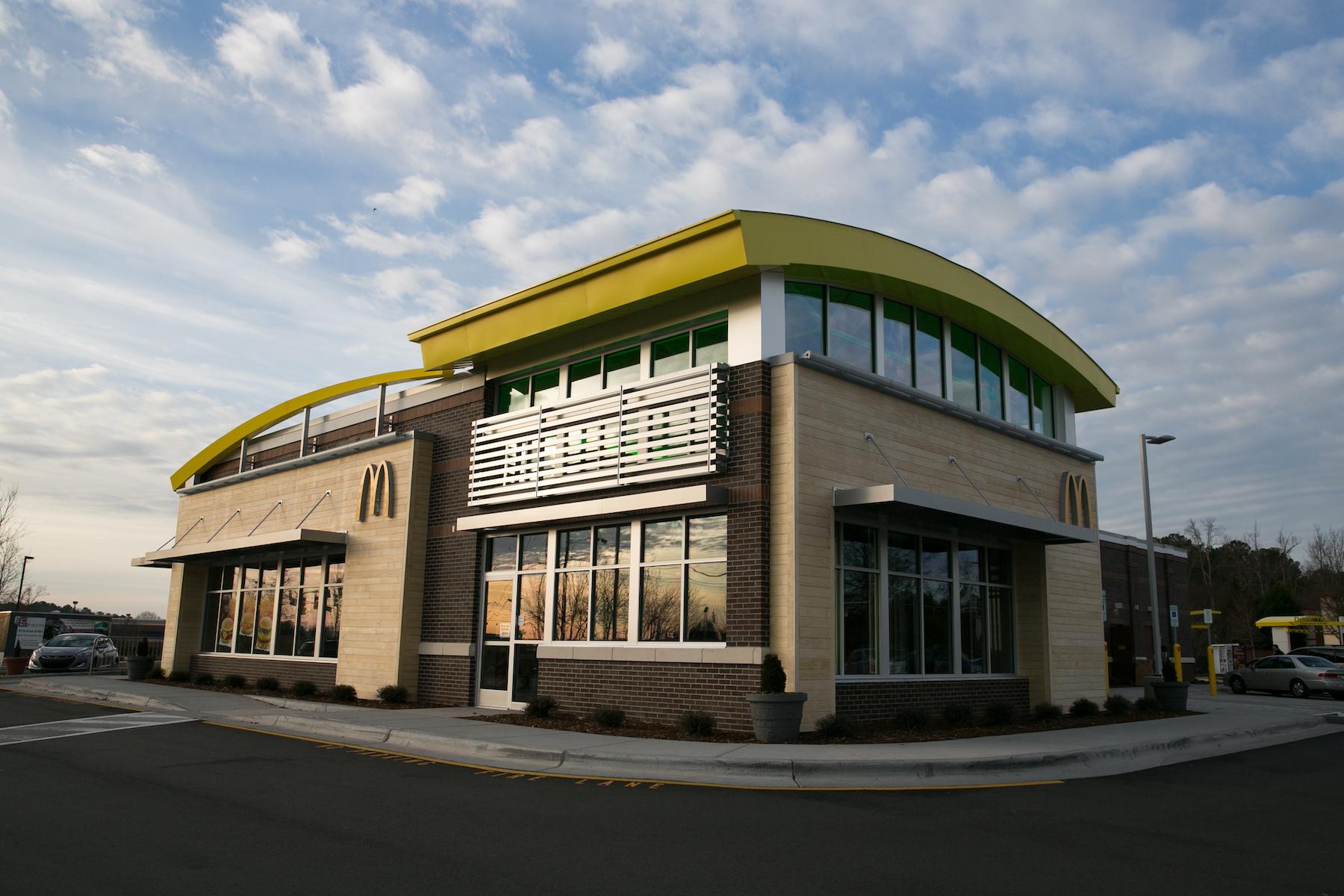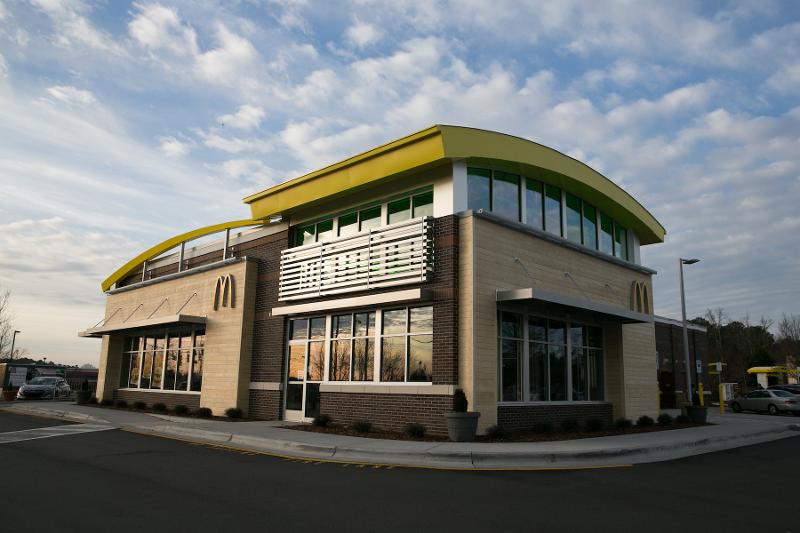
[ad_1]

McDonald’s franchisees complain that a dramatic increase in the number of inspections is hurting morale and causing managers to leave. / Photo courtesy of McDonald’s.
McDonald’s has been on a roll lately. Same-store sales recovered from the pandemic more quickly than anybody expected, and a series of marketing wins helped the chain’s average unit volumes hit $3.5 million last year.
Despite this, franchisees describe the atmosphere within the brand as “toxic.” Operators’ cash flow declined $100,000 last year despite historically high price increases thanks to soaring costs for food and labor and frequent discounts on the company’s mobile app.
Coming amid this is an unrelenting series of changes at the brand, most recently a tough new set of operating standards franchisees must follow, policed by a dramatic increase in surprise inspections that franchisees say hammer in-store morale and increase their costs.
Operators fear the standards will leave them unable to buy additional restaurants and that they may be vulnerable to losing their stores once their franchise agreements come due. “This is a disaster waiting to happen,” one operator said. We’ve granted franchisees anonymity so they could speak freely for this story.
PACE
McDonald’s informed franchisees last year that it would make it tougher for franchisees to renew their franchise agreement, coupled with stricter standards for spouses or children of franchisees to operate restaurants.
The idea was to take steps to tighten operations and ensure only the strongest operators remained in the system. But the company also wanted to free some stores to bring in new operators as part of its $250 million initiative to recruit a diverse set of new franchisees into the system.
At the heart of this effort is PACE, or Performance and Customer Excellence program. It’s an assessment program, run through third-party companies. McDonald’s has already been using this in some other global markets. It brought PACE to the U.S., first through test inspections last year and then for real starting on Jan. 1.
McDonald’s argues that the inspections led to improved customer satisfaction and speed in the U.K., dramatic improvements in drive-thru service in Spain and stronger customer satisfaction in France. “PACE clearly drives operational improvements, which provides a better customer experience that in turn drives business performance,” CEO Chris Kempczinski told investors last week. He added that the company expects similar improvements in the U.S.
Regular and surprise inspections have always been part of McDonald’s assessment of its operators. But, under the PACE program, the inspections are far more frequent, the standards are tougher and the ramifications more serious. Operators also complain the requirements are poorly constructed and say they had no input into the program.
The frequent inspections distract management and staff at a time when labor is tight. Multiple operators have said they’ve lost managers as a direct result of the inspection process, often to competing restaurants nearby.
The inspectors, they argue, are often young and inexperienced or come from different industries. And inspections are frequent. Mid-sized organizations with five to 15 stores can get 100 visits per year from these inspectors. “Our management teams are constantly preparing for visits,” one franchisee said. “They’re spending a third of the year preparing for visits.”
Those inspectors will don gloves and open machines and examine the wheels on carts for cleanliness. Operators say they aren’t given credit for mistakes fixed on the spot. For instance, inspectors will mark as a violation when an employee fails to give fries the required three passes with a salt shaker, even when a manager corrects that mistake as it happens.
Small operators must pass 75% of these surprise visits to be allowed to expand within the system, in addition to their existing, scheduled visits. For large operators, it’s 90%.
Another important standard is known as EPB2B, or “employee problem bottom 2 box.” It’s a measurement of the number of customers who call into an 800 number after a visit, take a survey, and say they were either dissatisfied or highly dissatisfied with their visit.
To be OK’d for expansion, operators must show improvement on those scores at more than half of their restaurants, according to documents seen by Restaurant Business. Either that, or more than half of their stores must have fewer than 10 such problems per 100,000 visits, plus at least 65% positive overall satisfaction from voice call customers.
But the data used for this standard comes from surveys taken through an 800 number instituted years ago. At the time, franchisees say, the company assured them the data would not be used to punish franchisees but to provide them data they can use to improve operations.
Franchisees say the EPB2B standard represents a broken promise. They also estimate that it represents a microscopic percentage of their total visits.
All of this is stressing operators, many of whom worry they’ll struggle to meet McDonald’s vaunted growth policy, which enables them to buy or build new locations. Last year, one franchisee noted, perhaps 95% would have met company standards for expansion. This year, they estimate, maybe half would qualify.
McDonald’s disputes that characterization, however, and says the “vast majority” of franchisees are currently qualified to buy additional restaurants.
In response to a series of questions from Restaurant Business, McDonald’s said that the PACE inspections were first presented to operators in 2019. The company said it has made adjustments to the process over the past 18 months based on feedback and noted that the inspections were twice delayed to give operators more time to understand the standards and the assessment process.
The company said the standards are “not new” and are “based on McDonald’s longstanding foundations of quality, service, cleanliness and food safety.” They also said the unannounced visits were part of the company’s previous performance management system. The visits “give owner/operators and the company an important view into customers’ everyday experiences in the restaurant.” McDonald’s also said that inspectors either come from the company or are certified food safety auditors.
“Our commitment to field execution through educating, coaching and consulting led to improved restaurant operations metrics, higher customer satisfaction (CSAT), improved order end to present end (OEPE) and overall guest count growth,” McDonald’s USA President Joe Erlinger said in a system message following the company’s earnings report. OEPE measures speed of service.
Rising sales, lower cashflow
Complying with these new standards costs franchisees money at a time when many have less of it, operators say.
Cash flow for McDonald’s franchisees declined over $100,000 per location last year, down from record numbers in 2021, according to the National Owners Association and franchisees. This came despite a 5.9% increase in same-store sales last year, including 10.3% in the fourth quarter, which featured menu price increases of 10%.
But food costs rose faster. Wholesale food costs rose 14.3% year over year, according to recent federal data. Labor costs have soared, too, as have energy costs. So, while that Big Mac you ordered is a lot more expensive, less of it is going to the franchisee.
One of the key elements of tension between a franchisor and a franchisee is over their divergent goals. A franchisor is paid based on a percentage of revenue, typically through a royalty. McDonald’s also controls its real estate, typically charging rent at 13% of sales.
Franchisees, on the other hand, must make a profit from those sales. Thus, strong sales were good for McDonald’s. But the high food and other costs hit operators hard.
And franchisees argue that many of McDonald’s moves are hurting their profitability. Some expect they may have to pay as much as $15,000 per store just to ensure they have to pass the PACE inspections. McDonald’s disputed that estimate and said that there is no investment tied to the PACE inspections. The company also said that operators have “access to the tools they need to pass PACE assessments.”
At the same time, the company has aggressively offered discounts through its mobile app. For instance, there are seven offers right now on my own McDonald’s app, including $1 for any size fries, $5 for a 20-piece Chicken McNuggets, and 20% off a purchase of $5 or more.
In an email to members, the National Owners Association (NOA) over the weekend argued that there needs to be a set threshold for discounting percentages. “We should not, and can no longer, be accepting of the burden of the entire impact of inflation,” the association, an independent group of McDonald’s owners, said in the email. “Promotions and discounts have become significant line items on our” profit-and-loss statements.
McDonald’s has acknowledged the challenge of inflation on operators and is taking aggressive steps to help operators in Europe, where inflation has hit hardest. The company expects to spend up to $150 million to help franchisees overcome higher costs. Profit margins at company stores declined in the fourth quarter, to just over 15% of revenue, because of commodity prices and high energy costs.
But the company in an email also noted that cash flow remains far higher than it was a few years ago. McDonald’s said that operator cash flow is up 35% since 2018. And the company says its restaurants “continue to generate long-term returns for operators despite the short-term volatility the industry is experiencing.”
That volatility is expected to continue this year. McDonald’s expects food and paper costs to be up mid-to-high single digits, which is “still obviously very elevated from where it’s been for a long time,” CFO Ian Borden told analysts last week.
Franchisees estimate their cash flow will decline another $25,000 to $50,000 this year.
Big changes, low morale
Amid all this, McDonald’s is reorganizing its corporate structure. The brand is making changes to its organization, with layoffs appearing likely. To the company, the changes are necessary to stay on top and speed decision making.
Franchisees fear that the additional cuts will ultimately put more pressure on franchisees, mostly through corporate overhead. McDonald’s has over the years cut its general and administrative costs to meet investor demands, which has led to significant cuts in the number of field staff that work with franchisees. Operators worry there will be even fewer after the new round of cuts and some say they’re already seeing experienced field staff leave the company, replaced by people who are younger and less experienced.
Operators also say they’re spending more themselves on corporate overhead to make up the gap. And they believe inspections are making it worse.
The massive number of changes belie McDonald’s outward performance. The company is on an impressive run of sales and profits. And it added restaurants in the U.S. for the first time in eight years last year.
Yet franchisees have been leaving the system in record numbers, often with McDonald’s purchasing the restaurants. The company is changing its ownership standards and working to recruit new operators for the first time in years. It is also overhauling its organization, with the goal of simplifying decision-making. All of that suggests a company working its way up from the bottom, rather than the top.
To McDonald’s, the changes are necessary for the brand to remain on top. It’s one thing to make changes when an organization is struggling and in need of improvement. But executives have said frequently that it’s far better to make such changes when things are going well. “As Ray Kroc used to say, ‘If you’re not green and growing, you’re ripe and rotting,’” Kempczinski wrote in a system message last month. “We’re performing at a high level. But we can do better.”
But the number and frequency of announcements and changes has diminished morale among franchisees who wonder why there’s a need for so many moves.
Operators rated their relations with McDonald’s as a 1.5 on a scale of 1 to 5. That’s actually an improvement from the 1.09 they rated relations in July. But it remains historically low.
“The constant new announcements and franchising changes are made by corporate executives that aren’t restaurant-oriented and seem to have two things in common,” one operator said for the survey. “First, how do we distract from our own disconnected problems? And second, how do we create a way to further regulate or control our owners for our own agenda?”
On McDonald’s earnings call, Kempczinski noted that he often asks people what McDonald’s sells, which typically yields “puzzled looks” before someone ultimately mentions burgers and fries. “That’s technically true,” he said. “But as a largely franchised business, ultimately McDonald’s corporation is in the business of selling a brand so that others can sell burgers and fries. And while some may see it as a trivial distinction, I see it as fundamental.
“As goes the McDonald’s brand, so goes the health and economic value of our company and system.”
The quote rankled operators, who say after so many changes over the past few years, they feel more like employees than the partners the company has long said they were. “We’re not partners,” one franchisee said. “You wouldn’t do that to a partner unless you wanted a divorce.”
Members help make our journalism possible. Become a Restaurant Business member today and unlock exclusive benefits, including unlimited access to all of our content. Sign up here.
[ad_2]



